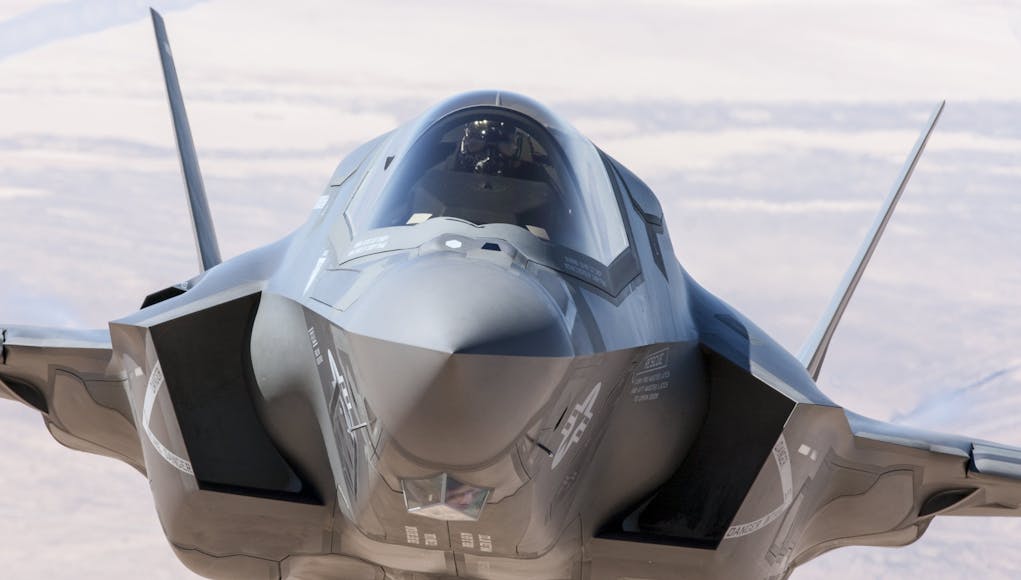Lockheed Martin recently completed its 300th Electro-Optical Targeting System (EOTS) for the F-35 Lightning II stealth fighter.
EOTS is an imaging sensor which allows the F-35 to identify, track and designate targets. The 300th EOTS was completed under the 10th Low-Rate-Initial Production (LRIP) contract, and each system was delivered on time or ahead of schedule.
“Completing the 300th EOTS is a testament to the growth of the program and our ability to produce a reliable and affordable system,” said Paul Lemmo, vice president of Fire Control/Special Operations Forces Contractor Logistics Support Services at Lockheed Martin Missiles and Fire Control. “More than 650 EOTS have been ordered to date, and we are committed to continuing to drive down the cost and increase performance to support the F-35.”
F-35 EOTS is the world’s first sensor to combine forward-looking infrared and infrared search and track functionality to provide F-35 pilots with precise air-to-air and air-to-ground targeting capability. The company say EOTS allows aircrews to identify areas of interest, perform reconnaissance and precisely deliver laser and GPS-guided weapons.
According to the Lockheed Martin website:
“The Electro-Optical Targeting System (EOTS) for the F-35 Lightning II is an affordable, high-performance, lightweight, multi-function system that provides precision air-to-air and air-to-surface targeting capability. The low-drag, stealthy EOTS is integrated into the fuselage with a durable sapphire window and is linked to the aircraft’s integrated central computer through a high-speed fiber-optic interface.
As the first sensor to combine forward-looking infrared and infrared search and track functionality, EOTS enhances F-35 pilots’ situational awareness and allows aircrews to identify areas of interest, perform reconnaissance and precisely deliver laser and GPS-guided weapons. Lockheed Martin has delivered more than 250 systems for the F-35 Lightning II.
Advanced EOTS, an evolutionary electro-optical targeting system, is available for the F-35’s Block 4 development. Designed to replace EOTS, Advanced EOTS incorporates a wide range of enhancements and upgrades, including short-wave infrared, high-definition television, an infrared marker and improved image detector resolution. These enhancements increase F-35 pilots’ recognition and detection ranges, enabling greater overall targeting performance.”
More than 240 F-35s have been built and delivered worldwide, and they have collectively flown more than 105,000 flight hours.














The EOTS uses older IR tech, the F-35 has been in R&D since 2001 and showing its age, infra red sensor silicon tech has moved on to a new generation.
Lockheed Martin in September 2015 was advocating the new gen tech use in EOTS
” The new and improved capabilities include short-wave infrared, high-definition television, infrared marker and superior image detector resolution than the baseline EOTS”
Rafael whose latest gen Litening targeting pods use the newer tech want to compete to replace LM EOTS for F-35 update in Block 4 if funding is forthcoming, which it not certain.
The older generation fighters are being updated with the new tech, Northrop Grumman with Selex
Sensor for IRST Pod selected for F-15 & F-16.
LM IRST21 pod selected for the F-18
“Beyond the detection of airborne threats, IRST21significantly enhances multiple target resolution compared to radar, providing greater discrimination of threat formation at longer ranges. Data from the IRST21 sensor system can stand alone or be fused with other on-board sensor data to provide maximum situational awareness to the warfighter”
https://www.flightglobal.com/news/articles/lockheed-reveals-advanced-eots-targeting-sensor-for-416631/
http://www.lockheedmartin.co.uk/content/dam/lockheed/data/mfc/pc/irst/mfc-irst-pc.pdf
The National Interest has got hold of the the Director of Operational Testing and Evaluation for the F35 annual report on status of F35 develeopment ( publish 3rd of October). It describes how almost every system to failing to reach operational minimum requirements. It is absolutely damming. The report contains such detail it must have been released because there are very serious concerns about the F35 problems. The report is named “The F35Program Continues to Stumble.” If correct it really is eye opening.